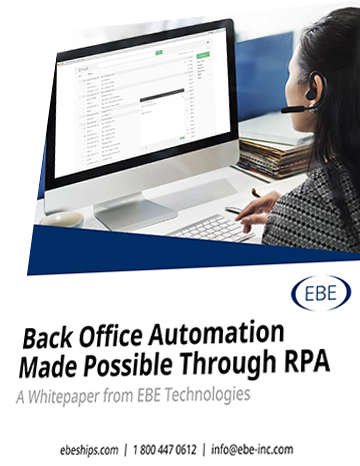

Receiving rate conformations hasn’t changed much over the years; they arrive through Electronic Data Interchange (EDI), email, load boards and even fax. Ideally, rate confirmation would all be EDI-based. EDI provides centralized visibility and triggers can be set to always accept specific offers based on lane, shipper, and commodity codes. In addition, changes in pick-up or delivery times and other-load related data are automatically made available for review.
Unfortunately, EDI isn’t always provided by the shipper. Even many of the Top 100 carriers receive email and fax rate confirmations from smaller shippers and brokers to meet capacity requirements. The issues with the manually processed rate conformation is the lack of management and reporting. Often these contracts are sent to individual CRS or a distribution list.
These processes lack visibility as to how many contracts where received, accepted, or denied. Further, these contracts are often printed for sharing between the CRS and dispatching teams, have terms and condition stamps added to the image, then scanned and emailed back to the shipper. To add further complexity to the process, should there be a change in the shipment, the process is repeated, providing additional opportunities for a service failure, and having a truck at the wrong place at the wrong time, not to mention an upset shipper and driver.
The adage, “without a process, a transaction cannot be managed”, rings true for many carriers. Management hopes team members do their job correctly but lack visibility to the number of rate contacts received, processed or the reason why contacts may have been turned down.
Given the challenges associated with the manual processing of rate contracts, systems have been developed to create processes that allow management to measure and manage the contracts in a digital workflow-based solution.
An automated solution allows shippers to send rate conformation to a single email or fax address. If the shipper is a repeat trading partner, information from the email or fax number can be used to identify the shipper and place the contract into a workflow based on routing rules.
Once in workflow, a determination is made if the contract should be accepted or rejected and a reason for the rejection. Rejection data is made available to management for strategic planning purposes.
Accepted loads advance in workflow where additional processes occur such as data entry into the TMS system and electronic stamp of terms and conditions can be applied and the contract is sent back to the shipper.
As a rate contract is indexed, a look-up is performed to determine if the contract is in workflow. If it is, the contract is placed in a workflow queue for a change audit review. During this review, a team member will review the two contracts to determine if there are differences between the status data.
If changes are detected, a determination is made to ensure the carrier can meet the delivery window as outlined in the new contract.
These automated rate contract workflows measure the contract at each stage of workflow. These measurements include how long was a contract in the review process, turndown reason, number of revised contracts, and individual productivity reporting.
Never lose a document, driver, or client through an automated rate contract management system!
EBE’s Rate Contract Management solution accepts and manages load tenders regardless of their source. Your operations will benefit from reduced website data entry, automated load status updates, more accurate KPI data, improved detention claim process, and less chance of lost documents. Contact us or call 800-447-0612 to find out more!









